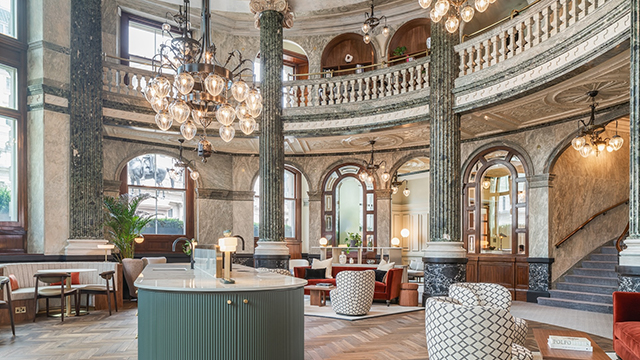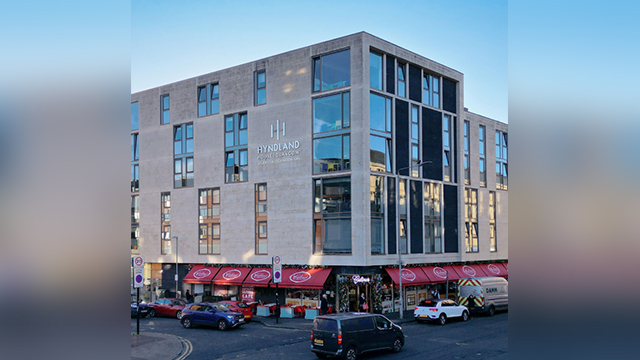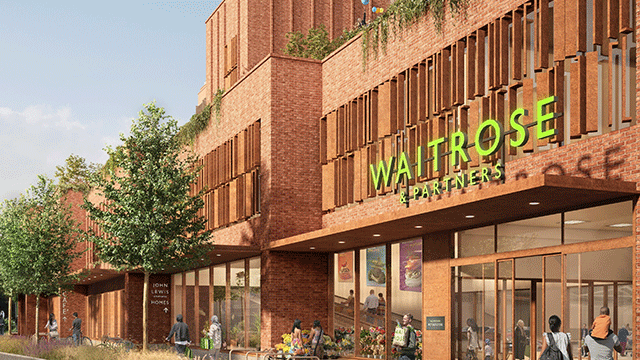When Dolphin Square, Pimlico’s infamous bourgeois council estate, fell into the hands of US private equity house Westbrook in 2005, residents called it the “darkest day” in its 70-year history – furious that Westminster council had cashed in, leaving them exposed to the greedy whims of a commercial landlord which would spoil their low rents and ruin their cosy, high-brow oasis forever.
And it’s not just the residents who looked like they had done badly out of the deal. The council did not get as much cash as it had hoped for the 1930s block when Westbrook slashed millions from the £191m purchase price, owing to the estate’s shabby condition. And Westbrook, which paid the council £176.5m for its 30-year lease, was forced by the council and sub-leaseholder, the Dolphin Square Trust, to either give tenants a lump sum of cash to leave their flats or let them stay at subsidised rents.
Yet, 18 months on, all parties have snatched some measure of victory. For its part, Westminster used £80m of the cash it received from the sale of the rundown block, which has housed high-profile residents such as Princess Anne, Christine Keeler and William Hague, to set up a new affordable housing charity, the Dolphin Square Foundation. It launches on Tuesday 19 June and will develop affordable and key worker housing across the capital (see p74).
Meanwhile, Westbrook is hunting for more residential opportunities in London – as well as offices, such as Shell-Mex House on Strand, WC2, which it is days away from buying.
Cash sums offered
So what exactly has happened on Dolphin Square over the past 18 months? At the time of the sale, the 1m sq ft estate contained 1,058 flats. Westbrook made an offer to the 870 tenants entitled to stay on the estate: take a lump sum of between £2,000 and £100,000 or keep paying the low rents of around £100 a week for a one-bed flat. A further 188 flats were either vacant or occupied by tenants who did not qualify for the deal.
Around half the eligible tenants agreed to go, leaving Westbrook with a total of 658 flats to refurbish and relet at market rates. Westbrook has now let 500 of these, and the remaining 158 will be available by August.
The 400 tenants that have stayed have retained their low rents until 2034. But 80 tenants signed up to pay market rents in exchange for the cash. Market rents for a one- bed flat are now £250-£350 per week. To date, this process has cost Westbrook £24m.
And so far Westbrook has spent another £20m on refurbishment works, including converting Rodney House, the old hotel, which has given it an additional 150 flats, taking the total of units on the estate to 1,200. It will spend a further £5m this year.
But its reward will be high. Once renovations are complete in 2008, it estimates that the annual rent roll will have risen from around £12m in 2005 to £20m.
Peter Woodley, a consultant to Brookhouse Capital – Westbrook’s UK asset manager – says that far from being a risky deal, Dolphin Square spelt gold dust for the private equity house. “It’s extremely rare for investors to secure something like this it’s very difficult to pick up a residential asset of this size today. It just isn’t possible to develop a 7-acre residential estate in the capital now. The Kings Chelsea site in SW10 is the same size but only has 300 flats.”
When Brookhouse took over the management of the SW1 estate, the rundown monolithic block left a lot to be desired. Worn-out leather Chesterfield sofas in the lobby, threadbare carpets and shabby light fittings set the tone. “When we came to Dolphin Square we knew we had a significant amount of work to do, not least because we didn’t know how the tenants would react to us. We felt that if the estate was going to be a success then we had to rebrand it and sell an entirely different product – so we gave it a major shake-up,” says Woodley.
The tatty old sofas and carpets have gone and Woodley, along with fellow Brookhouse consultant Amos Barber, has created what he calls a “middle-market product”. The new flats are aimed at 30-something professionals, rather than retired civil servants and the nobility as before. The average age on the 1,200-flat estate is now 32, rather than 60. Woodley says that their modernised flats are being snapped up within two to three days of coming to the market.
“If you look at what Dolphin Square was built for, then you realise that we have come full circle,” says Barber. “In the 1930s, it was meant to provide affordable accommodation for the middle-ranking professional. Now it’s the same: we’ve gone back to the sector that wants good quality accommodation in central London which is competitively priced.”
Hands-on management
Raising rents is the objective. And the younger, transient generation of residents will allow Dolphin Square’s rents to easily match those being charged in Pimlico overall. “People used to live in the square for 10 years: now our tenants are looking at living here for 1-2 years.”
So what do the old guard think about all the changes? One resident, who asked not to be named, says that most of his neighbours have changed their view on the sale. “Most of the tenants think Brookhouse has done a fabulous job. There’s a small pocket of people who mourn the changes, but they’re the sort who long to go back to the days of black and white television.”
One such resident bounds up to Woodley and Barber as we take a stroll around the estate’s manicured gardens to ask them about the new curtains for the bridge club. The pair are keen to point out that being on the estate full time helps them to spot opportunities for growing its value: “This is not like buying a shopping centre where you have 25 years of predictable income – it is very hands on. We have over 100 people employed on the estate to keep it running.”
Westbrook, which owns large residential schemes like this all over the US and one in Paris, wants to stay invested in Dolphin Square for the long term, and is likely to extend the lease when it expires in 2034. It is not interested in buying the freehold, however. “The investors have no reason to buy the principal drive with Dolphin Square is income. We don’t need the freehold to continue doing what we’re doing,” says Barber.
Dolphin Foundation acts for key worker homes
The Dolphin Square Foundation, which will launch on 19 June, was set up in the wake of the sale of Westminster council’s leasehold interest in Dolphin Square to Westbrook in 2005. To head off criticism over the sale, the council made a gift to the trust of £80m to provide affordable housing.
The charity, which is headed by the former managing director of Bush Homes, Robin Fielder, will develop housing for key workers and people in housing need, primarily in Westminster, but in the wider London area too. Former Land Securities chief Ian Henderson is on the board of trustees.
The foundation is now searching for developers ready to join it in joint venture projects in Westminster and other parts of central London. It aims to build some large-scale mixed-used schemes and intends to have its first project under way by the end of the year.
“We’re looking for a series of partners, developers or housing associations to act with us as equity partners to secure affordable homes for London. We want people who have experience in this type of project,” says Fielder.
Fielder says a further donation from the proceeds of the sale of the square may take its funds to £110m, but it plans to gear up so it can develop on a grander scale.
“We will use our financial strength to secure additional borrowing from the banks. Even £80m doesn’t buy that many houses and we want to get involved in development on quite a large scale.”










